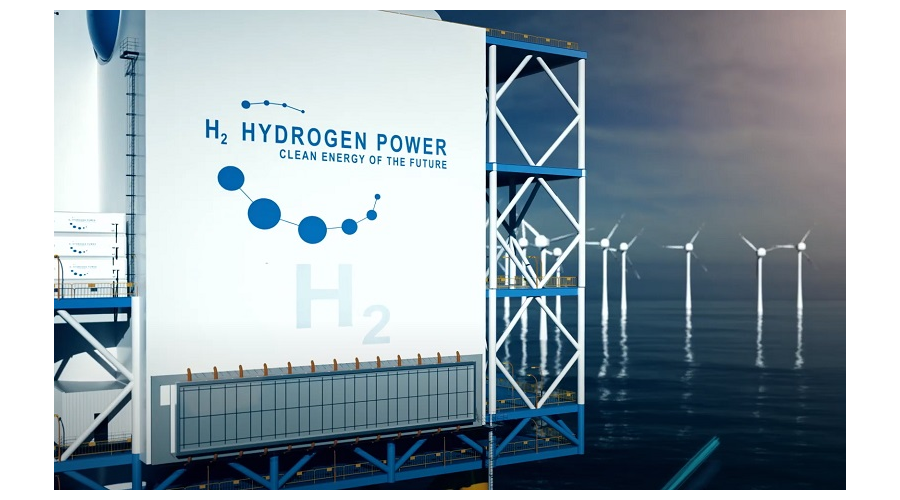
The hydrogen economy is no longer a distant future. Governments and industry globally are spending billions today to kickstart a cleaner hydrogen revolution. When scaled up, it could drive real change.
There is a growing consensus that hydrogen has a significant role to play as a cleaner energy source in our journey to net zero carbon emissions by 2050. It’s why many nations, from the likes of Australia to the Netherlands, Japan to Singapore, are now taking it seriously. The hype is palpable, and stakeholders are trying to crystalise how a fully-fledged hydrogen industry will look.
Becoming a hydrogen superpower is now an enviable goal for a number of countries, industry players, policy makers and energy majors. This source of power could account for up to 12% of global energy use by 2050, abating 80 gigatonnes of carbon dioxide by this time. The current global demand for hydrogen is already estimated to be 70 million tonnes a year.
Even though the blueprint for success is still up for debate, the impetus for change has reached fever pitch. This was the mood at the recent World Hydrogen Summit in Rotterdam. Hydrogen has the potential to rewrite the energy infrastructure map since energy production will shift to those locations that invest heavily in related infrastructure, renewable energy, as well as the logistics and transport of this power vector.
“Hydrogen is the future, but we are still at the very early stage. Supply chains have yet to be put in place and economies of scale are not there yet. The ambition from many players is not matched by the reality on the ground, but there is a lot of potential,” details Nikunj Panchal, Global Business Manager at KBR Sustainability Advisory Consulting.
The war in Ukraine has turbo-charged the thinking on the ‘energy trilemma’ and the need to source more sustainable, secure, and affordable sources of power away from gas, oil and coal. The race to net zero carbon emissions is also sharpening minds on where to focus investments and where current systemic risks lie as the global energy system transitions.
“These are exciting times and the thinking on the hydrogen economy is moving rapidly. Key players -including global energy companies, prominent key gateway ports, logistic giants and progressive nation states — are all looking at first mover advantage in this sector,” explains Ben Sawford, Global Vice President for KBR Sustainability Advisory Consulting.
A nascent but promising industry
Right now, the total investment earmarked for hydrogen projects and along the entire value chain amounts to an estimated US$500 billion through to 2030. There are currently 500 major initiatives around the world, with US$160 billion of industrial investment and US$70 billion of pledged public support. Momentum in the industry is gaining pace. The barriers are not just technological, financial or industrial leadership, there are other challenges.
“Only five percent of earmarked projects are in a mature state. There are hurdles. Hydrogen projects really need support from government, as well as streamlined and clear policies. At the moment the process is way too complex. Businesses, industries, investors, policy makers, government leaders and the scientific community all need to come together with a common agenda of making hydrogen a reality,” states Panchal.
“There is also greater realisation that as many stakeholders in the industry debate the different merits of green, blue, grey or pink hydrogen with its differing degrees of emissions reduction we are paralysed in our inaction. It doesn’t matter about the colour of hydrogen at this stage, whether it’s from fossil fuels with carbon capture or from nuclear as long as we focus on the journey of building hydrogen infrastructure and cleaner energy sources.”
Currently, the hydrogen industry is embryonic, infrastructure is limited, and scaled-up deployment is a key issue. The upfront technology development and costs are also significant, as is the investment in bulk plant, storage and distribution, as well as related safety and security concerns.
“With hydrogen you need an ecosystem approach. You need new storage facilities, you need pipelines and logistics for its transport, you need off-takers. All this hydrogen infrastructure needs to come together at the same time. Every element of this has a co-dependence on the development of every other element,” explains Panchal.
The development of the natural-gas industry can act as a template for the growth of the hydrogen economy. The rise of LNG took the sort of expertise and capital investment that only the integrated global energy giants had the capability of achieving.
A Swiss Army knife delivers change
The characteristics of hydrogen have also earned it the moniker ‘the Swiss Army knife’ of decarbonisation, as long as you can produce it with reduced or no carbon emissions. This is due to the fact that hydrogen can be used for multiple activities from fuelling cargo ships to powering heavy-duty trucks. It can also fuel chemical or steel industries, generate electricity, or even be used to store energy.
Hydrogen can be converted to ammonia, which is easier to transport than hydrogen and a more energy intensive fuel.
The global shipping industry is looking to ammonia to power cargo ships to improve its share of greenhouse gas emissions. The fact is, international shipping accounts for nearly 3% of global greenhouse gas emissions, according to the International Maritime Organisation. It is a significant emitter and these need to be addressed. The aim is to reduce emissions from shipping by 40% by 2030, with efforts to slash this by 70% come 2050.
It is why the role of major ports across the world from Singapore to Tianjin, Jebel Ali to Los Angeles could be extremely important as nodes of investment, realisation and delivery of a fully-fledged hydrogen economy. For instance, the Port of Rotterdam has a target to import up to 20 million tonnes of hydrogen by 2050.
“Ports as a node for the hydrogen economy are an extremely important concept and development. Key logistics hubs could look to import and process hydrogen, ammonia or other greener fuels. Ports can then use these clean fuels to power cargo ships, logistical support or onward transport for industry. This changes the whole business model of these gateways. As contained nodes and ecosystems in their own right, so-called hydrogen ports also become much more bankable as projects,” explains Sawford.
“It also raises new and exciting questions. What will these ports need to finance and articulate their ambitions as hydrogen hubs? What they need will be multi-modal from importing clean fuels from countries that have excess renewable energy, to storing clean fuel for low-carbon maritime use and export, to creating hydrogen from nearby wind farms, to deploying it in industrial and factory clusters that have a use for high-grade, cleaner energy such as steel and chemical production. There is so much potential.”
Read the most up to date Fuel Cell and Hydrogen Industry news at FuelCellsWorks




